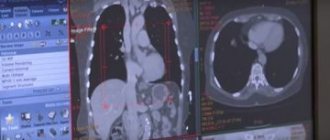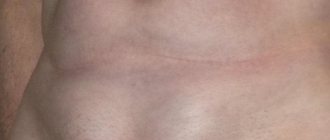An obsessive need for rituals, denial of encouraging and soothing words from loved ones, all-consuming anxiety and fear - such symptoms occur one-time in many. But if they are all present in your life, if they are systemic and repeat over and over again, this is a pathological condition. And if you turn to specialists, it is possible that you will hear from them: “You have obsessive-compulsive disorder.”
What kind of diagnosis is this, why it occurs, how it manifests itself and what it threatens you with, you will learn from this article. And, of course, we will tell you how to cope with the disorder, whether you can do it yourself and what hypnosis has to do with it.
What is obsessive-compulsive disorder?
Obsessive-compulsive disorder (abbr. OCD ) is a mental disorder characterized by the appearance of involuntary thoughts and fears (obsessions) that force a person to perform certain actions (compulsions), which interfere with daily activities and cause a state of increased tension.
The patient may try to ignore or stop the intrusive thoughts, but this only increases stress and anxiety. Eventually, the person feels compelled to engage in compulsive behavior to try to relieve the increasing stress. Despite attempts to ignore obsessions or get rid of them, patients continue to return to them. This leads to increased ritual behavior - a vicious circle of OCD is formed.
Obsessive-compulsive disorder often centers around certain themes, such as the fear of being infected by viruses or bacteria. To cope with the fear of contamination, a person may compulsively wash their hands until the skin becomes inflamed and cracked.
Frequent hand washing
People with OCD often experience an exaggerated fear of infection. The consequence of the phobia is washing your hands too often. Moreover, the process is associated with a number of strange actions. For example, a person soaps his palms a strictly certain number of times or wipes each finger on all sides, always in the same order. As a result, a routine hygiene procedure turns into a strictly regulated ritual. The inability to perform all actions in the usual order causes anxiety and irritation in the patient.
Causes and risk factors for OCD
The causes of obsessive-compulsive disorder are not fully understood. Main theories of its development include:
- Biochemistry . OCD may result from changes in brain chemistry and dysfunction.
- Genetic reasons . Genetic factors may play a role in the development of OCD, but scientists have yet to identify specific genes.
- Environmental factors . Some scientists consider environmental factors such as infections as a trigger for obsessive-compulsive disorder, but more research is needed to confirm this theory.
Factors that may increase your risk of developing obsessive-compulsive disorder include:
- Family history . The risk of developing OCD increases if parents or other blood relatives have this disorder.
- Stressful situations . If you have experienced stress or a traumatic situation, your risk of developing OCD may increase. This reaction may, for some reason, trigger the obsessive thoughts, rituals, and emotional experiences that are characteristic of obsessive-compulsive disorder.
- Other mental disorders . OCD may be associated with other mental disorders such as anxiety disorders, depression, substance abuse, or tic disorders.
Therapy
Treatment for obsessive-compulsive disorder involves psychotherapy as the foundation for success. Drug treatment helps and consolidates the positive effect.
OCD belongs to the sphere of activity of a psychotherapist; a psychiatrist is not involved. His field of activity is “big psychiatry,” that is, psychosis, when the patient loses himself and has no criticism, suffers from delusions, hallucinations and other phenomena of this kind.
In psychotherapy, preference is given to cognitive-behavioral techniques. The point is to change the way you think, suppress obsessions in the bud or not react to them. A significant role in the long-term existence of changes belongs to the emotional response to thoughts, which feeds the problem and gives it the opportunity to “live.” A system of sessions is required, repeating the course several times if necessary. All patients succeed in changing their thinking and sticking to it during psychotherapy; it’s a matter of time.
Ericksonian hypnosis with shallow immersion is considered an effective technique. The sufferer remains fully conscious and often does not even understand that a mental influence or suggestion has taken place. The technique is used carefully and only after proven OCD. Against the background of psychosis, any interventions in the psyche are contraindicated; the acute phase may worsen.
Finally, drugs of several groups are used:
- Tranquilizers. They relieve anxiety, normalize sleep, and partially relieve obsessive states. Diazepam and similar. In small doses in short courses under the supervision of a doctor.
- Antidepressants. Most of these drugs have the ability to combat obsessive thoughts; Fluoxetine and Prozac are often prescribed. The peculiarity of antidepressants is that they require long-term use. At least 4 months, possibly more. Short courses don't make sense. The consequences are unpredictable. OCD usually develops resistance to this particular drug if the person is not fully treated.
- If the changes occur organically, it is possible to prescribe antiepileptic drugs: Lamotrigine, etc. They help relieve excess electrical activity in the structures of the brain.
- Regardless of the stage, vitamin and mineral complexes are indicated to maintain the tone of the central nervous system (vitamin E, C, P, group B).
Almost no one can get rid of the problem on their own. The reason is an abnormal way of thinking, which cannot be corrected without outside help. Pills also do not always allow you to cope with the change. Advanced cases cannot be treated at home; hospitalization is required.
How to help yourself with obsessive-compulsive disorder in this case?
It is worth undergoing a course of therapy in the neurosis department or at the clinic’s day hospital. Such departments are no different from those in ordinary hospitals; they treat patients with borderline deviations, and not with psychoses, as it might seem at first glance.
With a long course of the pathological process, the development of incorrect behavioral stereotypes is possible. Residual effects in the form of apathy, fatigue, and anxiety persist for many months. There is a constant fear of returning to the abnormal state. What makes normal life and social activity impossible. There is a reluctance to work and communicate. It is likely that full-blown depression will develop and will require separate treatment.
The reason may also be an incorrectly selected initial course of therapy, early withdrawal of medications, especially antidepressants.
Therefore, a person suffering from OCD should be monitored even after the end of treatment and achievement of the intended result. According to the recommendations, it is recommended to continue taking antidepressants for at least a month after the symptoms of neurosis have disappeared. This measure consolidates the results.
Social rehabilitation and continuation of psychotherapy are possible, this time in small groups. It is important to restore a person’s self-confidence and the ability to cope with the problem.
Can obsessive-compulsive disorder be completely cured?
Yes, it's quite possible. Even a high-quality remission is enough to ensure the usual quality of life.
Symptoms and behavior of patients
Obsessive-compulsive disorder typically includes obsessions and compulsions. In some cases, only symptoms of obsession or compulsion may be expressed. You may or may not realize that your obsessions and compulsions are excessive or unreasonable, but they are time-consuming and negatively affect your daily life, work ability, and social functioning.
Obsessions
Obsessions are recurring, persistent and involuntary thoughts, urges or ideas that are intrusive in nature and cause stress or anxiety. The person may try to ignore them or get rid of them through compulsive behaviors or rituals. Obsessions usually occur when a person tries to think about or do other things.
Excessive desire for cleanliness
An exaggeration of the risk of infection in OCD is manifested by an obsessive desire to clean the premises as often as possible. The patient constantly experiences discomfort: all surrounding objects seem not clean enough to him. If a person washes the floors several times a day, is eager to check all surfaces for dust, and unnecessarily uses strong disinfectants - this is an alarming signal.
In some people suffering from obsessive-compulsive disorder, a painful desire for cleanliness is manifested by a fear of touching various objects (for example, the patient refuses to press buttons in an elevator or opens doors with his elbows so as not to touch them with his hands). Sometimes patients are unable to do normal activities when they see dishes left on the table or crumpled napkins.
Diagnostics
Stages of diagnosing OCD:
- General inspection . A general examination is done to rule out other problems that may be causing your symptoms and to determine if there are any complications associated with OCD.
- Laboratory research . These may include, for example, a complete blood count (CBC), thyroid function testing, and alcohol and drug screening.
- Mental State Assessment . It involves talking with a professional about your thoughts, feelings, symptoms and behaviors. With your permission, the specialist can talk to your family or friends.
- Diagnostic criteria for obsessive-compulsive disorder. Your doctor may use the criteria in the Diagnostic and Statistical Manual of Mental Disorders published by the American Psychiatric Association.
Diagnostic problems
OCD can sometimes be difficult to diagnose because the signs may be similar to those of anancastic personality disorder, anxiety disorders, depression, schizophrenia, or other mental illnesses. A combination of obsessive-compulsive disorder and another mental illness is possible. Work with your doctor so that he can make an accurate diagnosis and prescribe the correct therapy.
Diagnosis and treatment
OCD can be diagnosed by a psychiatrist. Basically, the picture appears during a conversation between the patient and the doctor and during special tests to confirm obsessive-compulsive disorder. During the conversation, the specialist will identify characteristics that are associated with the main symptoms. With OCD, the patient’s thoughts should belong to him, and not be the products of delusions and hallucinations (this is a different disease).
Testing is based on the Yale-Brown obsessive-compulsive scale. Some of its points show the severity of obsessions, the other part analyzes the significance of actions. The doctor fills out the scale during the interview based on the severity of symptoms over the past week. The doctor analyzes psychological discomfort and the duration of symptoms in one day. He also evaluates how the possible disorder affects the patient’s life. It is very important whether the person himself can resist the symptoms.
As a result, the test determines one of five degrees of disorder: from a subclinical state to, alas, extremely severe. It is worth considering that obsession can be part of other diseases (schizophrenia, for example), neurological syndromes.
OCD is a chronic pathology. Any competent treatment stops attacks and reduces their severity.
Getting rid of OCD is a full-fledged treatment, the main components of which are psychotherapy, the use of medications and physical therapy. These methods require contacting a doctor and qualified medical care. Due to the fact that the diagnosis is stigmatized (in other words, perceived as shameful), people do not want to go to the doctor until the last minute. But not all attempts at self-treatment are successful.
Treatment of obsessive-compulsive disorder
OCD cannot be completely cured, but it is possible to keep its symptoms under control and reduce their impact on daily life. Some people require lifelong treatment.
The two main treatments for OCD are psychotherapy and medication. Often the most effective is a combination of both methods.
Psychotherapy
Cognitive behavioral therapy (CBT) is a type of psychotherapy that is an effective treatment for many people with OCD. Exposure therapy (exposure and prevention therapy), a type of CBT, involves interacting with an object of obsession, such as dirt, and learning healthy ways to cope with anxiety. Exposure therapy requires effort and practice, but sufferers can enjoy a better quality of life once they learn to manage their obsessions and compulsions.
Therapy can be carried out individually, as a family or in a group setting.
Medications
Some psychotropic medications help control OCD symptoms. The most common first-line drugs are antidepressants.
Antidepressants approved by the Food and Drug Administration for the treatment of OCD include:
- Clomipramine (Anafranil) for adults and children 10 years and older
- Fluoxetine (Prozac) for adults and children 7 years and older
- Fluvoxamine for adults and children 8 years and older
- Paroxetine (Paxil, Pexeva) for adults only
- Sertraline (Zoloft) for adults and children 6 years and older
However, your doctor may prescribe other antidepressants and medications used to treat mental illness.
The habit of repeatedly checking your actions
Each of us has at least once found ourselves in a situation where, after leaving the house, we could not remember whether we had locked the front door. This usually happens when we think and are distracted from actions performed automatically. This kind of distraction is normal. We can talk about pathology if a person stops trusting himself and is afraid of the consequences of losing control over a familiar situation.
People with OCD experience these kinds of fears all the time. To protect themselves and calm down, they form numerous rituals associated with double-checking their own actions. When leaving the house, a person can count out loud the number of turns of the key, pull the locked door the “required” number of times, walk around the apartment along a strictly defined route, checking that there are no electrical appliances turned on, etc.
Prevention
Prevention measures:
- eliminating a source of stress from life or reducing its negative impact;
- adequate child upbringing models;
- healthy and nutritious nutrition;
- rejection of bad habits;
- timely treatment of diseases causing OCD.
The prognosis for obsessive-compulsive disorder neurosis is quite favorable - with proper treatment, it can go away completely or go into a mild form, which does not disrupt social adaptation and does not interfere with a person’s daily life.
Tendency to count everything
Obsessive-compulsive disorder may manifest itself as a pathological tendency to count. The patient constantly counts the objects around him: the steps in the entrance, the steps he takes on his usual path, cars of a certain color or brand. Moreover, the action itself is often ritual in nature or associated with irrational hopes and fears. For example, a person gains unreasonable confidence in future luck if the count “adds up”, or begins to fear the harmful consequences of not having time to count some items.
What is an obsession?
An obsession is a collection of symptoms and behavioral reactions that form a single group. Obsession is a compulsive phenomenon. A person suffering from this pathology experiences attractions that he is unable to overcome, even if he realizes that they are illogical and contrary to common sense. If obsessive drives run counter to the moral and ethical principles of the patient, then he makes efforts to avoid them. Such conditions lead to a feeling of fear and affect the patient’s psyche.
Compulsions are obsessive actions and rituals that the patient performs in order to feel relief from his condition. At the same time, the level of anxiety and stress decreases. Such manifestations are typical for people who have high intellectual development and are prone to introspection.
There are several forms of the disease: chronic, progressive and episodic. In the chronic form, the patient’s condition remains unchanged; he constantly experiences obsessive desires, accompanied by compulsions. In the progressive form, the disease is in development, and there is a deterioration in the condition.
In the episodic form, the disease does not manifest itself constantly; periods of exacerbation alternate with periods of remission. In this case, the alternation may be associated with the patient’s biological rhythms, with the occurrence of stressful situations, or with the influence of both factors simultaneously.
Compulsions can manifest themselves in the form of an obsessive desire to wash hands, count objects, lay them out in a prescribed order, etc. Obsessions include constant thoughts and worries about one’s competence, obsessive fears, frequent mental returns to past events, accompanied by anxiety, an unreasonable feeling of physical discomfort, etc.
Symptoms of the disease
The signs of OCD are quite broad, but they share common properties:
- obsessive thoughts are unwanted, painful, they take up energy and time, which affects a person’s daily life;
- obsessions are accompanied by feelings of anxiety or fear;
- There are also compulsions - actions that help get rid of obsessive thoughts or emotionally alleviate experiences. They acquire the character of rituals - periodic (daily or worse - hourly) repetition of the same actions. Failure to perform rituals is accompanied by anxiety, irritability and even manifestations on the physical level (excessive sweating, headaches, etc.).
All this leads to disruption of the patient’s social adaptation, deterioration of attention, and decreased mood. A person suffering from OCD cannot work normally, communicate with loved ones, and often leave the house.
The main symptoms of obsessive-compulsive disorder syndrome (neurosis) include the following:
- adherence to superstitions and religious fears. A man panics if a black cat crosses the road. He can walk around the place where the animal has passed, even if it takes a decent amount of time;
- fear of infection and fear of germs. The patient washes his hands every 5 minutes, treats all things in the house and workplace with special antimicrobial drugs, etc. Against this background, hypochondria develops - a tendency to find diseases in oneself that actually do not exist;
- obsessive thoughts of a sexual nature. A person is haunted by ideas about sexual intercourse throughout the day and even in his sleep. The thoughts are so painful that they prevent you from doing anything else. They may have a specific character (attraction to a specific person, fetishism, etc.). Often leads to ritualization of masturbation;
- everyday fears. The patient is afraid that he did not lock the door to the apartment, left something on the stove, forgot to take his wallet with him, etc.;
- pathological pedantry. A person tends to do everything clearly, at the same time; all things must be arranged in a certain order and, most often, symmetrically.
It must be taken into account that the patient is aware of the illogicality of his thoughts and actions, but cannot do anything about it, since, for example, refusal to act brings with it outbreaks of fear.
Reasons for the development of the disorder
Modern medicine still cannot name with firm certainty the exact factors contributing to the development of this mental disorder. However, there are a number of theories and assumptions. According to these data, among the biological factors the following reasons are distinguished:
- metabolic disorders that are necessary for the normal functioning of neurons;
- deviations of the autonomic nervous system;
- pathologies of impulse transmission between nerve cells of the brain;
- complications after infectious diseases;
- head injuries;
- heredity.
Scientists have identified social causes that provoke the development of OCD into a separate group, among them:
- education within a strict religious framework;
- consequences of a traumatic situation due to a real danger to life;
- complex relationships in the team;
- stress.
The panic fear characteristic of this disorder can be based either on personal experience or be imposed by society. Such examples include disorders triggered by viewing crime news. When obsessive fears arise, a person tries to overcome them with actions that convince them of the opposite: he checks several times to see if the car is locked. However, such actions bring relief for a short time. It is not possible to get rid of this disorder on your own; complex treatment is necessary, otherwise the disease can completely absorb the human psyche.
Causes of development of obsessive-compulsive neurosis
The causes of OCD are divided into two types: psychological and physiological.
Physiological factors include:
- brain diseases (traumatic brain injury, meningitis, etc.);
- pathologies of the nervous system;
- genetic predisposition;
- long-term infectious diseases.
Psychological reasons include:
- mental trauma;
- prolonged stress and overwork;
- mental illnesses, against which OCD develops;
- unhealthy family relationships.
Symptoms of the disease
Both adults and children are susceptible to this disease. Children are less likely to suffer from this mental disorder. Symptoms of the disorder manifest differently depending on the age of the patient.
In adults
The main sign of the disorder in adults is the presence of obsessive thoughts:
- about death, violence, physical harm;
- about sexual perversions;
- fear of developing a disease or contracting an infectious disease;
- blasphemous thoughts or religious ideas;
- worries about material losses;
- fear of harming others;
- moral motives;
- violent images;
- superstitions;
- the desire for ideal order;
- fear of losing something particularly valuable.
The appearance of such thoughts plunges a person into panic and horror. He realizes the groundlessness of these ideas, but is unable to control superstition or fear.
This syndrome can manifest itself in the form of external symptoms, which are expressed in repetitive actions - compulsions:
- frequent hand cleansing;
- double-checking the condition of the iron, gas stove (on or off);
- putting things in order on the desktop every 20-3 minutes;
- recalculation of stair steps.
The listed symptoms are perceived by a person as a way of “getting rid” of persistent thoughts. Obsessive-compulsive disorder intensifies when the patient gets into crowded places. Typical manifestations of the disease are the following:
- fear of being robbed;
- fear of getting dirty from the “dirty” clothes of passers-by;
- fear of infection from the “sick”;
- nervousness due to strange sights or smells.
To avoid such conditions, a person with OCD tries not to get into situations that provoke their development, that is, avoids crowded places.
Suspicious people and those who are used to keeping everything under control are more susceptible to the development of this syndrome. The disease is often accompanied by a significant decrease in self-esteem. This develops due to the fact that a person realizes the irrationality of what is happening to him, but he is powerless in the face of his fears.
A person prone to compulsions and obsessions suffers from them and tries to get rid of them. His life is filled with rituals that are supposed to “prevent” any unlikely events.
In children
This syndrome is typical for adults. Obsessive-compulsive disorder is very rare in children. It manifests itself in the form of the following fears:
- fear of getting lost;
- obsessive complexes;
- fear that parents will refuse and send them to an orphanage;
- fear of losing something necessary, for example, a notebook or textbook. The child constantly reviews the contents of the briefcase.
Obsessive compulsive personality disorder in childhood can cause the child to be unsociable, moody, have poor appetite and nightmares. Treatment at this age will help completely get rid of the disease. If signs of the syndrome appear, you should contact a child psychologist.
Tendency to constantly analyze relationships with others
Obsessive-compulsive disorder changes the patient's understanding of the meaning of contacts with others. He tends to overly meticulously analyze every conversation or action, suspect other people of hidden thoughts and intentions, evaluate his own and other people's words as stupid, harsh or offensive. It is very difficult to communicate with a person suffering from OCD: he constantly considers himself either offended or an offender, without having any real reason for this.
What are the results and prognosis?
Upon completion of the program, you get rid of obsessive thoughts and rituals, fear of pollution, unmotivated fears, panic attacks and multiple vegetative symptoms (sudden surges in blood pressure, rapid heartbeat, dizziness, nausea).
According to statistics, the effectiveness of the methods used is close to 100% if all recommendations of specialists are followed.
Skills you acquire during the program:
- self-control and self-regulation
- constructive analysis of the body's condition
- understanding your own mental and emotional sphere
- ability to control your attention
- ability to act consciously in stressful situations
The emotional and physical state improves significantly, and confidence in oneself and the future is gained. Emotional stress is relieved, sleep and appetite are restored. Performance increases many times over.











